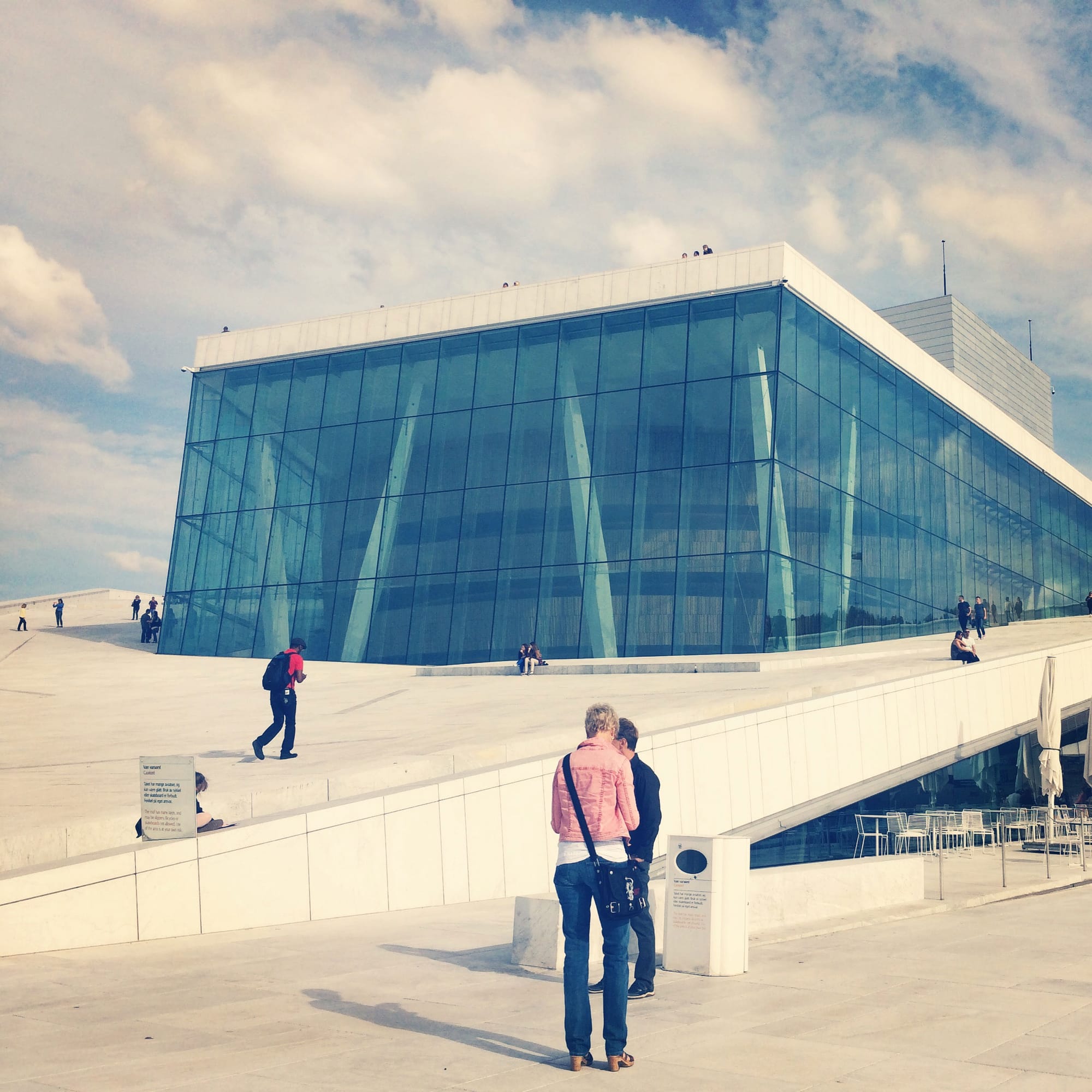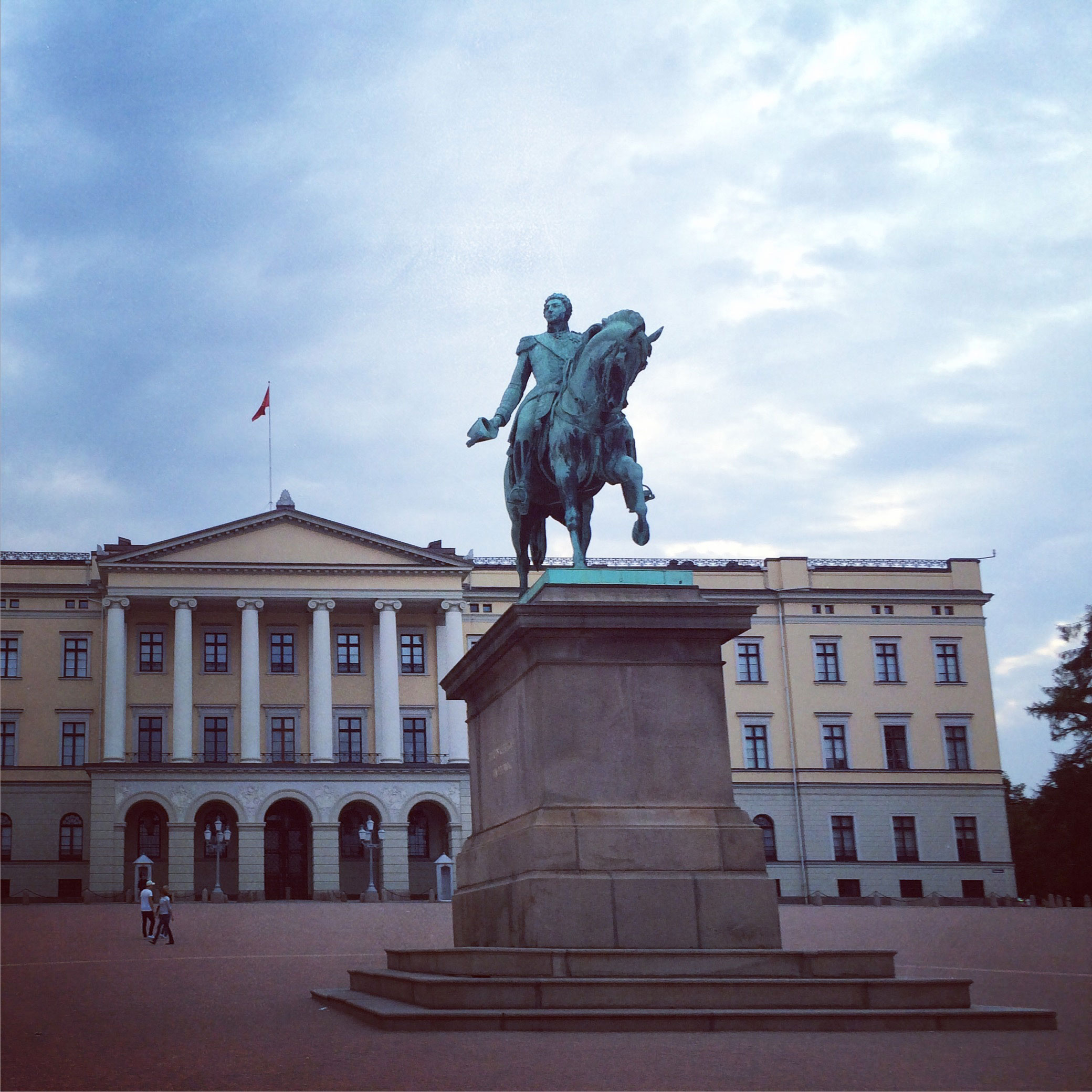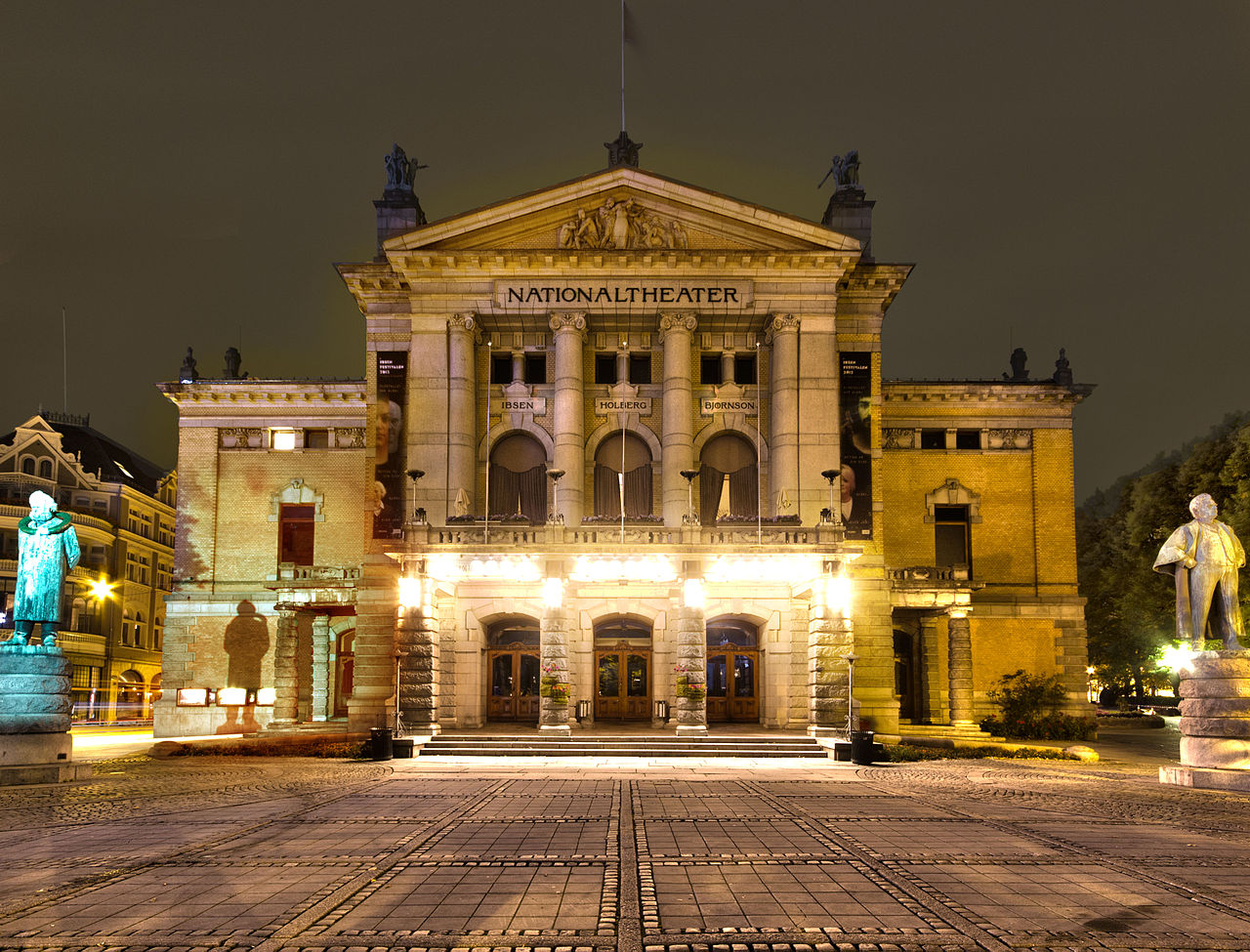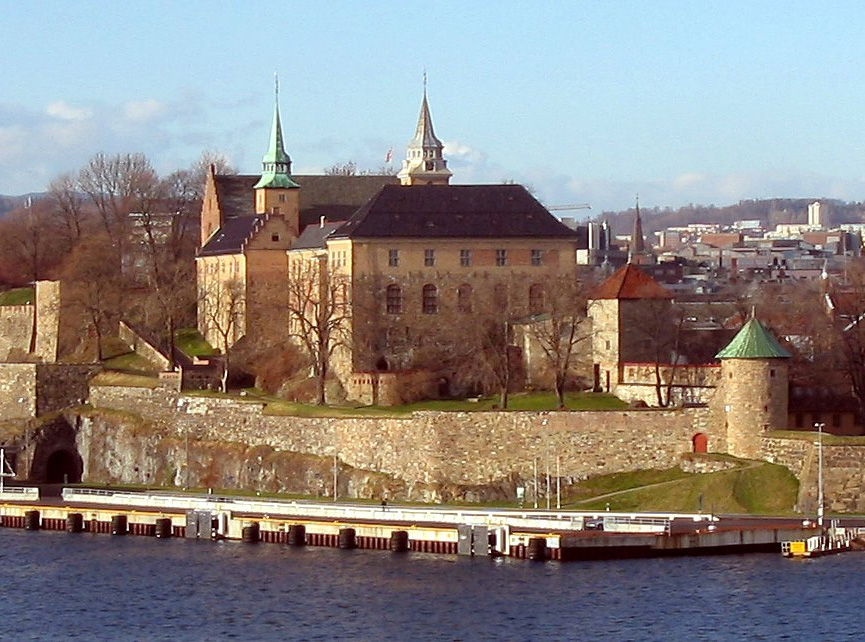The majority the must-see attractions in Oslo and the surrounding area are accessible to the disabled and wheelchair users. In some cases, disabled travelers may be forced to adapt from the norm to participate in certain experiences, but it is possible with some advance planning. See the information below concerning many of the top sights Oslo has to offer:
Oslo Opera House

The Norwegian Opera and Ballet takes up residence at the spectacular Oslo Opera House. Opened in April 2008, the Opera House has become a must-see attraction for visitors to Oslo due to its architectural beauty. Norway’s largest cultural building comprises a total interior area of 414,000 square feet and sits on the water of the Oslofjord. Its angled exterior and rooftops are covered with Italian marble and white granite. Visitors are able to walk up the building’s exterior and onto the roof. Certain areas have ledges and steps, but wheelchair users can safely roll to the top of the building. Given the steep grade, manual wheelchair users may experience some difficulty if unaided, but powered wheelchairs and scooters will climb the surface with little difficulty.
The interior of the Opera House is wheelchair accessible. Wheelchair seating spaces are available in each of the three auditoriums. Wheelchair accessible restrooms are available onsite. Tickets for the wheelchair seating locations cannot be purchased online. but may be reserved via telephone or at the box office. For more information about purchasing accessible seating tickets or to view a list of upcoming performances, visit operaen.no. The Opera House is an approximately 11 minute walk from the Oslo Central Station (Flytoget, NSB trains) and the Jernbanetorget Metro station (lines 1 through 6).

Nearest T-Bane Metro station: All lines at Jernbanetorget
Viking Ship Museum
The Viking Ship Museum is a component of the larger Museum of Cultural History at the University of Oslo. The museum tells the history of the Vikings in the area which is now the country of Norway. On display are pieces which were excavated during a number of separate archaeological digs. The most important of these finds is the Oseberg Ship, excavated from a Viking burial mound in 1904. The ship is believed to have been constructed prior to 800 A.D. and has been preserved fully whole. It has been lauded as one of the most important finds from the Viking Age. Two other ships are on display at the museum, in addition to artifacts such as beds, buckets, a cart, and wood carvings. The museum and its exhibit halls are wheelchair accessible. Admission is available to adults for 80 NOK and to seniors for 50 NOK. Tickets to the Viking Ship Museum also permit entry into the Historical Museum. Additional information on the museums and their exhibits can be found at hkm.uio.no.

Nearest BUS: Route 30 at Museum
Fram Museum
Located only a short distance from the viking Ship and Kon-Tiki Museums, the Fram Museum is dedicated to telling the story of the numerous polar expeditions undertaken by Norwegian explorers. Three in particular are paid extensive attention by the museum: Fridtjof Nansen, Otto Sverdrup and Roald Amundsen. The museum’s most important display is the exploration ship Fram, built in 1891. The Fram was the ship of Fridtjof Nansen and is said to have sailed farther North into the Arctic region and farther South into the Antarctic than any other wooden ship in history. The museum is wheelchair accessible at most visits, but some areas of the ships on display may not be. Admission is available to adults for 100 NOK, to seniors for 70 NOK and to the disabled for 50 NOK. Persons accompanying the disabled enter free of charge. Additional information is available at frammuseum.no.

Nearest BUS: Route 30 to Bygdøynes
Royal Palace

Constructed between 1825 and 1849, the Slottet or Royal Palace is the official residence of the Norwegian Monarch. It is currently inhabited by King Harald V, who has sat on the throne since 1991. The palace and its grounds were opened to public tours in 2002 and it is today one of the most open and accessible royal residences in the world. Guided tours of the Royal Palace are available in the summer, usually from June to August. Tours are available in English and Norwegian and permit visitors access to some of the most beautiful state rooms in the palace. Rooms included on the tour include the Council Chamber, Family Dining Room, Great Hall, King Haakon VII Suite, Mirror Room and Palace Chapel. Tours require the purchase of a ticket. Tickets for adults are 95 NOK and for seniors 85 NOK. For more information on the tour or ticket purchase, visit kongehuset.no.
Freely open to the public and on the palace grounds is the Slottsparken, or Palace Park. The park is 54 acres and contains trees, flowers and other foliage, lakes, streams and paths throughout. The Queen’s Park portion of the outdoor space is open to the public from May 18 to October 1 each year. The palace tour, grounds and park are all wheelchair accessible. Pathways are available throughout the Palace grounds.

Nearest T-Bane Metro station: All lines at Nationaltheatret
Frogner Park and Oslo City Museum
Named for the manor which it surrounds, Frognerparken, or Frogner Park, is the most visited public park in Norway. The Frogner Manor was built in 1750 and sits at the South end of the park. The manor buildings are now occupied by the Oslo City Museum. The museum is focused on cultural history, featuring exhibits dedicated to the founding and development of Oslo and the city’s cultural and commercial activities. On display is an extensive collection of paintings. Most of the museum’s entrances, exhibits and restrooms are wheelchair accessible. Admission is provided free of charge. For additional information, visit oslomuseum.no.
The surrounding park is a natural oasis in Oslo and has numerous lakes and water features. Wheelchair accessible paths run throughout the park. Pedestrian bridges cross the water in numerous areas and are also accessible. Housed within the park is the Vigeland sculpture installation. The sculpture area contains 212 bronze and granite sculptures designed by Gustav Vigeland. Spread across 80 acres, it is the world’s largest sculpture installation designed by a single artist. For more information on the park grounds and sculpture installation, visit the Friends of Frogner Park website at frognerparkensvenner.no (Norwegian).

Nearest T-Bane Metro station: 10 minutes from all lines at Majorstuen
National Theatre

The National Theatre in Oslo was built and hosted its first performance in 1899. It is now an architectural and cultural landmark in Oslo, roughly located between the Norwegian Parliament and the Royal Palace. Among the theatre’s opening shows was An Enemy of the People by Henrik Ibsen. The theatre is now considered the “home” of his works, as nearly all have been performed there. The theatre is today a Norwegian Cultural Heritage Site and is protected by parliamentary resolution. Wheelchair users can access the theatre and all performances shown there, as reserved wheelchair seating spaces are available in the performance halls. For more information on show schedules, performance tickets or accessibility, visit nationaltheatret.no (Norwegian).

Nearest T-Bane Metro station: All lines at Nationaltheatret
Parliament of Norway
The Stortinget, or Parliament Building is the meeting place for the supreme legislature of Norway. The parliament was established by the country’s 1814 Constitution. It has 169 members who are elected to four year terms based on a proportional representation framework. Bills passed by the parliament are sent to the King for Royal Assent. The Norwegian monarch has never withheld assent from any bill since the dissolution of the country’s union with Sweden in 1905. Since March 1866, the parliament has met in the building located at Karl Johans Gate 22 in Oslo. The Parliament Building is open for tours to the public on Saturdays free of charge. Tours are wheelchair accessible, offered in English or Norwegian and provide visitors with an opportunity to view the parliamentary meeting chamber. For more information on tours of the parliament, visit stortinget.no.

Nearest T-Bane Metro station: All lines at Stortinget
Nobel Peace Center
Opened in 2005, the Nobel Peace Center houses exhibitions which document the history of the Nobel Peace Prize and honor past recipients of the prize. The center is located steps from the Oslo Harbor and is housed inside the former Oslo Vestbanestasjon (West railway station). It is within walking distance of the Oslo City Hall, the place where the Nobel Peace Prize Award Ceremony takes place each December 10. The exhibits within the center rely heavily on multimedia and interactive technology to visually tell the story of the prize. The center and the exhibitions within are entirely wheelchair accessible. Admission is 90 NOK for adults, 60 NOK for seniors and 160 NOK for families. More information can be found at nobelpeacecenter.org.

Nearest T-Bane Metro station: All lines at Nationaltheatret
Akershus Fortress

The Akershus Festning, or Akershus Fortress is a medieval castle built in the 1290s to protect the city of Oslo. The fortress has come under siege numerous times throughout its history, but has survived them all. The castle’s first battle was in 1308, when the fortress fell under siege by a Swedish duke whose brother later won the Swedish throne. The fortress was surrendered without combat to Nazi Germany in 1940 after a number of German attacks on Denmark and Norway.
The fortress is a national symbol of Norway and still plays an important role in national affairs, regularly serving as the host site of both governmental and Royal functions. The fortress is located along the banks of the Oslofjord and overlooks the piers in the harbor on one side and City Hall on the other. The Akershus Fortress, castle grounds and Castle Church are freely open to the public and wheelchair accessible. Users of wheelchairs, walkers or canes and those with any form of reduced mobility should understand that the pathways through the castle grounds are made of uneven cobblestones. The paths are also quite steep in some areas, including on the path up to the lookout points to the Oslofjord and City Hall area. Most powered wheelchairs can make it across the cobblestones and up the hills, though visitors will need to judge the terrain for themselves. Manual wheelchair users will benefit greatly from some assistance up the walkways. For more information on the Fortress and the attractions within, consult visitnorway.com’s overview of Ankershus.

Nearest T-Bane Metro station: 10 minutes from all lines at Stortinget
Kon-Tiki Museum
The Kon-Tiki Museum honors the 1947 expedition by Norwegian explorer Thor Heyerdahl. Heyerdahl traveled across the Pacific Ocean, from South America to the Polynesian Islands. He believed that people from South America had settled Polynesia. Through the Kon-Tiki expedition, he hoped to prove that this theory was possible by making the journey from Peru to Polynesia using only the materials and resources that would have been available at the time. The Kon-Tiki was built as a balsa wood raft. The ship made the journey and the group traveled more than 4,300 miles over a period of 101 days, finally landing on the Tuamotu Islands. The raft returned safely and is today preserved in the museum in Oslo. The museum is wheelchair accessible, with visitors able to walk/roll right up to the tank in which the Kon-Tiki still floats. Admission is priced at 90 NOK for adults and 60 NOK for seniors. For more information on the museum and its exhibits, visit kon-tiki.no.

Nearest BUS: Route 30 to Bygdøynes
